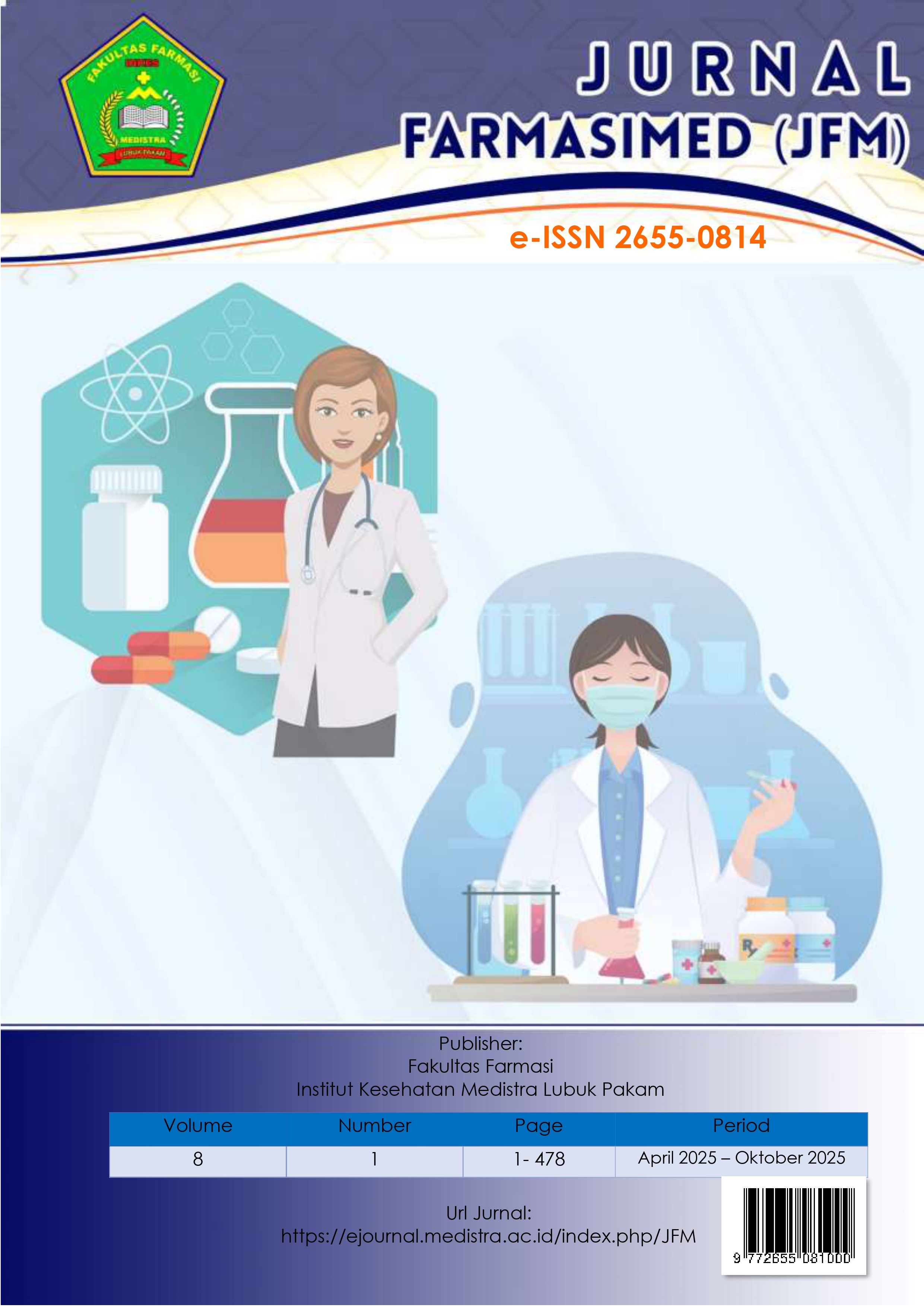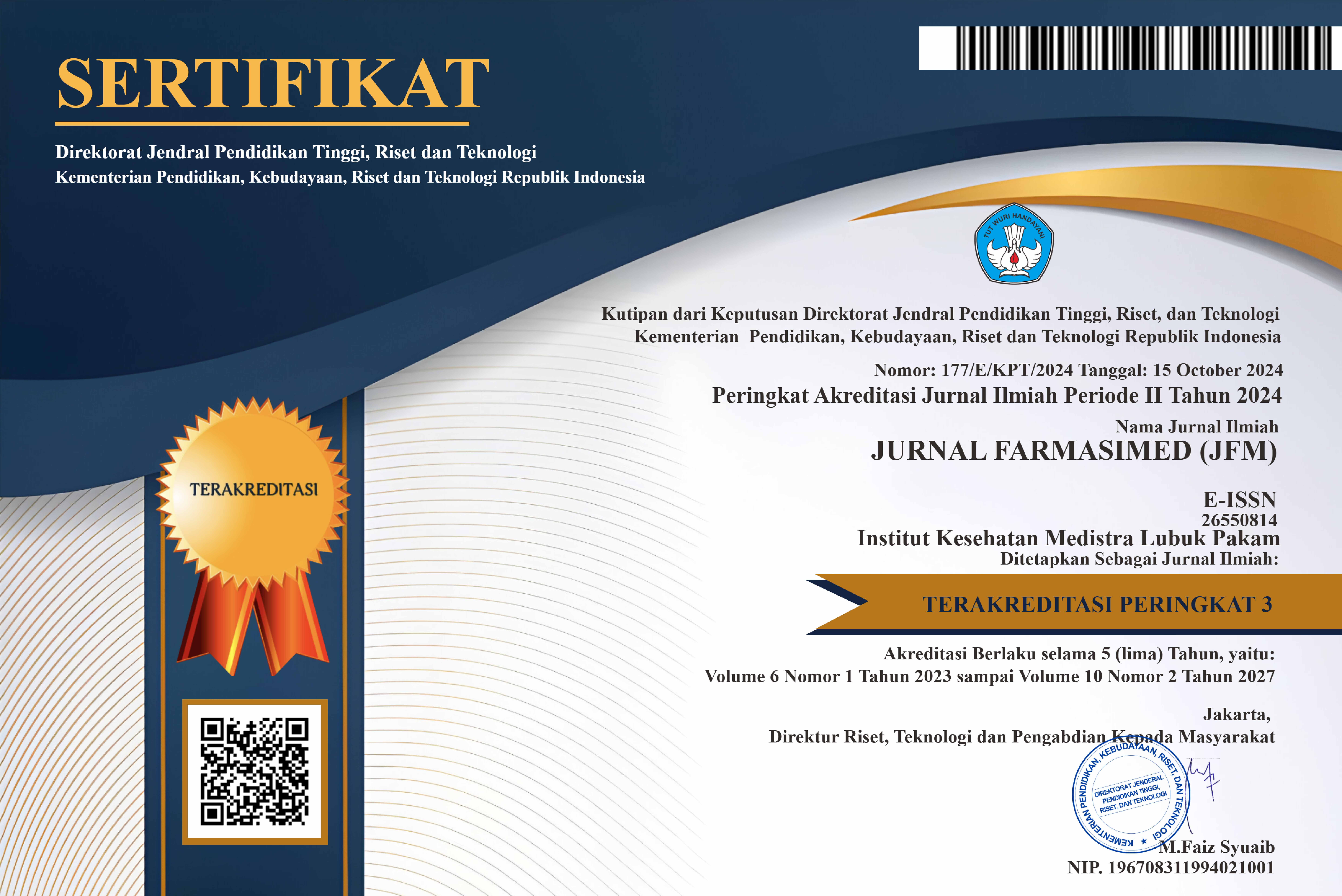Innovation of Banana Blossom Herbal Tea in Enhancing Interleukin-1 and Interleukin-2 Levels as an Immunomodulatory Approach for Cancer Prevention
DOI:
https://doi.org/10.35451/cts2c934Keywords:
ELISA, Herbal tea, Banana blossom, Immunomodulator, CancerAbstract
Background: Cancer remains one of the foremost causes of mortality worldwide, including in Indonesia. Its steadily increasing prevalence has positioned cancer as a critical global health challenge and a major focus of international public health initiatives. Pathologically, cancer is characterized by the uncontrolled and progressive proliferation of abnormal cells, ultimately impairing immune system function. Phytochemical profiling of the banana blossom has revealed the presence of bioactive compounds, including alkaloids, phenolic steroids such as β-sitosterol, saponins, as well as flavonoids such as quercetin, tannins, anthraquinones, and terpenoids. Flavonoids and phenolic compounds within the banana blossom demonstrate potential immunoenhancing properties, exhibit antioxidant activity against free radicals, and function as immunomodulatory agents with prospective applications in cancer prevention. Purpose: This study aimed to evaluate the immunomodulatory and anticancer potential of banana blossom extract through IL-1 and IL-2 regulation using male rats as experimental models, assessed through ELISA. Research method: An experimental design was employed, encompassing the preparation of the herbal tea, metabolite profiling, and measurement of IL-1 and IL-2 levels in serum isolated from the blood of rats administered the banana blossom herbal tea. Results: A significant increase in IL-1 and IL-2 levels was observed following treatment with banana blossom herbal tea and quercetin in both experimental groups compared with the negative control group. Administration of the extract at a dose of 400 mg/kg BW, as well as quercetin, demonstrated higher immunostimulatory activity compared with levamisole as the positive control. Conclusion: Banana blossom herbal tea exhibits immunomodulatory activity through an immunostimulatory mechanism and possesses potential for development as a therapeutic agent in cancer prevention.
Downloads
References
[1] P. Putri and R. A. Juliansyah, “Self-Management Nyeri Pasien Kanker dengan Metode Non-Farmakologi ( Cancer Patient Pain,” S Self- Manag. With Method Non Pharmacol., vol. Abdikemas;, 2022.
[2] Kusmardika, “Potensi Aktivitas Antioksidan Daun Kelor (Moringa Oleifera) dalam Mencegahan Kanker,” J Heal Sci, vol. 2, no. ysiother;2(1):46–50, 2020.
[3] N. S. R. Aisy et al., Studi Literatur Mekanisme Perubahan Sel Normal Menuju Keganasan Sel Serta Peran dalam Pencegahannya, vol. 1, no. 2. Pros Semin Nas Biol;1(2):1172–81, 2021.
[4] P. S. Manongko, M. S. Sangi, and L. I. Momuat, “Uji Senyawa Fitokimia dan Aktivitas Antioksidan tanaman Patah Tulang (Euphorbia tirucalli L,” J MIPA, vol. MIPA;9(2):, 2020.
[5] E. Suryanto and F. Wehantouw, “Aktivitas Penangkap Radikal Bebas dari Ekstrak Fenolik Daun Sukun (Artocarpus altilis F,” Chem, vol. Prog;2(1):, 2019.
[6] E. Agustina, F. Andiarna, and I. Hidayati, “Uji Aktivitas Antioksidan Ekstrak Bawang Hitam (Black Garlic) Dengan Variasi Lama Pemanasan,” Al-Kauniyah J, vol. Biol;13(1), 2020.
[7] D. P. Handayani, V. Purnamasari, and D. Yuliana, “A Literatur Review : Aktivitas Imunomudulator Pada Tanaman Herbal,” Makassar Pharm. Sci., vol. Journal:1[, pp. 243–250, 2024.
[8] S. Fawzy, M. M. Ahmed, B. A. Alsayed, R. Mir, and D. Amle, “IL-2 and IL-1 β Patient Immune Responses Are Critical Factors in SARS-CoV-2 Infection Outcomes,” J Pers, vol. 12, pp. 1–8, 2022.
[9] M. J. da. T. Rampe and J.L., “Pengujian Fitokimia dan Toksisitas Ekstrak Etanol Jantung Pisang Kepok (Musa paradisiaca LINN.) dengan Metode Brine Shrimp Lethality Test (BSLT,” J. Sainsmat, vol. 4, no. 2, pp. 136–147, 2015.
[10] A. Astija and D. Djaswintari, “Analisis Kandungan Lemak pada Abon Dibuat dari Jantung Pisang (Musa paradisiaca) dan Ikan SIdat (Anguilla marmorata,” J. Nutr. Coll., vol. 9, no. 4, pp. 241–246, 2020.
[11] N. Imaniar and S. Nurafni, “Sarang semut (Myrmecodia pendans) sebagai bahan baku teh herbal antikanker,” J Farmamedika, vol. Journal);7, 2022.
[12] A. B. R. Adi Budi Ramadhan, Galih Hamdani Riansyah, and Saeful Amin, “Potential of Flavonoids from Cat’s Whiskers Plant (Orthosiphon Stamineus) as Antidiabetic Candidates through Inhibition of Tyrosine Phosphatase 1B and Aldose Reductase Proteins,” Jurnal Farmasimed (Jfm), vol. 7, no. 2. J Farmamedika (Pharmamedica), pp. 311–318, 2025, doi: 10.35451/jfm.v7i2.2654.
[13] F. Handayani, N. Fatimah, A. K. Ansyori, P. E. Sari, and I. Agustina, “Antioxidant and Antibactery Activity of Ethanol Extract of Selutui Puka Leaves (Tabernaemontana macrocarpa Jack.) Against Propionibacterium acnes,” Jurnal Farmasimed (Jfm), vol. 7, no. 1. JURNAL FARMASIMED (JFM), pp. 1–6, 2024, doi: 10.35451/jfm.v7i1.2290.
[14] S. E. Sinulingga, L. B. Sebayang, and S. Sihotang, “Inovasi Pembuatan Teh Herbal dari Jantung Pisang dengan Tambahan Daun Stevia Sebagai Pemanis Alami,” J. Bios Logos, vol. 11, no. 2, p. 147, 2021.
[15] L. Badriyah and D. A. Farihah, “Analisis ekstraksi kulit bawang merah (Allium cepa L.) menggunakan metode maserasi,” J Sint, vol. Sint;3(1):, 2022.
[16] N. Nyoman, W. Udayani, P. Dony, S. Wiguna, E. Cahyaningsih, and I. G. Agung, “Skrining Fitokimia dan Aktivitas Antioksidan Ekstrak Daun Benalu Jeruk (Dendrophthoe glabrescens (Blakely) Barlow) dengan Pelarut n-Heksan dan Etanol Phytochemical Screening and Antioxidant Activity of Orange Mistletoe (Dendrophthoe glabrescens) Blake,” J Ilmu, vol. Medicam;9(, 2023.
[17] Y. MI, M. F, and J. A, “Peningkatan Sitokin Interferon Gama Tikus Wistar Setelah Diberikan Ekstrak Etanol Buah Etlingera Rubroloba A,” D . Poulsen Sebagai Imunostimulator. Med Sains J Ilmu, vol. Kefarmasia, 2023.
[18] R. Marbun et al., “The Immunomodulatory Activity of Pirdot Leaf Extract (Sauraia Vulcani korth,” 2020.
[19] N. K. Esati, E. O. J. La, and G. A. D. Lestari, “Uji Aktivitas Antioksidan Ekstrak Etanol Daun Rosemary(Rosemarinus officinalisL) Dengan Metode DPPH dan FRAP Serta Pengaplikasiannya Sebagai Zat Aktif Dalam Losion,” J. Sains Dan Kesehat., vol. 4, no. 4, pp. 363–369, 2022.
[20] N. Rusdiah., G. N, and S. N. Stiani, “Formulasi Dan Evaluasi Sediaan Tablet Dari Ekstrak Etanol Daun Katuk (Sauropus androgynusMerr,” Dengan Menggunakan Metod. Granulasi Basah. J. Media Sains, vol. 1, no. 1, pp. 45–65, 2021.
[21] M. J. Rampe and J. L. Tombuku, “Pengujian Fitokimia dan Toksisitas Ekstrak Etanol Jantung Pisang Kepok (Musa paradisiaca LINN.) dengan Metode Brine Shrimp Lethality Test (BSLT,” J. Sainsmat, vol. 4, no. 2, pp. 136–147, 2015.
[22] Aisya Maulidia, S. Wijayanti, F. Mustamin, and J. Ubrusun, “Testing the Antioxidant Activity of Ethanol Extract on Terap Fruit Seeds (Artocarpus odoratissimus) using the DPPH Method,” Jurnal Farmasimed (Jfm), vol. 7, no. 1. JURNAL FARMASIMED (JFM), pp. 73–80, 2024, doi: 10.35451/jfm.v7i1.2350.
[23] A. Hosseini, B. M. Razavi, M. Banach, and H. Hosseinzadeh, Quercetin and metabolic syndrome: A review, vol. 35, no. 10. Phytotherapy Research, 2021.
[24] C. Ucciferri, J. Vecchiet, and K. Falasca, “Role of monoclonal antibody drugs in the treatment of COVID-19,” World J. Clin. Cases, vol. 8, no. 19, pp. 4280–4285, 2020, doi: 10.12998/wjcc.v8.i19.4280.
[25] L. Apriani and Andrey Wahyudi, “Pengaruh Pemberian Minyak Biji Jinten Hitam (Nigella Sativa L.) Terhadap Persentase Ekspresi Interleukin-2 Pada Perokok Aktif,” Indones. J. Pharm. Nat. Prod., vol. 7, no. 01, pp. 72–81, 2024, doi: 10.35473/ijpnp.v7i01.3008.
[26] M. Y. Park et al., “Function and Application of Flavonoids in the Breast Cancer,” Int. J. Mol. Sci., vol. 23, no. 14, p. 7732, 2022, doi: 10.3390/ijms23147732.
[27] X. Pan et al., “A Comprehensive Review of Natural Products against Liver Fibrosis: Flavonoids, Quinones, Lignans, Phenols, and Acids,” Evidence-based Complement. Altern. Med., vol. 2020, no. 1, p. 7171498, 2020, doi: 10.1155/2020/7171498.
[28] R. Sankaranarayanan, A role for the hydroxybenzoic acid metabolites of flavonoids and aspirin in the prevention of colorectal cancer. South Dakota State University, 2021.
[29] F. A. A. F. Gadelha et al., “Musa paradisiaca L. Inflorescence Abrogates Neutrophil Activation by Downregulating TLR4/NF-KB Signaling Pathway in LPS-Induced Acute Lung Injury Model,” Pharmaceuticals, vol. 18, no. 1, p. 8, 2025, doi: 10.3390/ph18010008.
[30] R. Mapanao, T. Rangabpai, Y. R. Lee, H. W. Kuo, and W. Cheng, “The effect of banana blossom on growth performance, immune response, disease resistance, and anti-hypothermal stress of Macrobrachium rosenbergii,” Fish Shellfish Immunol., vol. 124, pp. 82–91, 2022, doi: 10.1016/j.fsi.2022.03.041.
Downloads
Published
Issue
Section
License
Copyright (c) 2025 SUSILAWATI HARAHAP, Siska Futri Nasution

This work is licensed under a Creative Commons Attribution-NoDerivatives 4.0 International License.
Copyright in each article is the property of the Author.

























